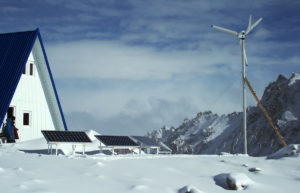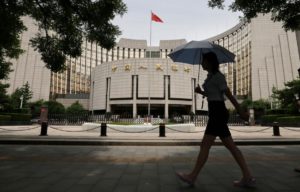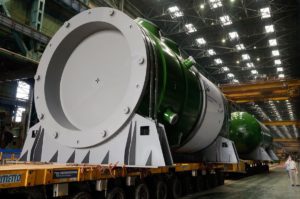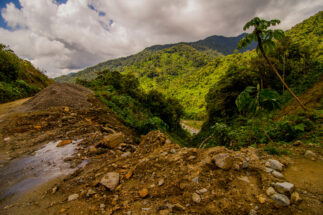Malika Akramova* lives with her family in the outskirts of Dushanbe, the capital of Tajikistan. Her house is next to a large cement plant. Every morning, she wakes up to find that everything inside is covered with dust.
“When the cement plant’s two smokestacks are working it is difficult for us to breathe,” Akramova said tearfully. “If it were possible, we would have moved to another place a long time ago. But the money we earn is barely enough to live on.”
As of 30 March, Dushanbe’s air has been ‘good’ for just five days so far this year. This means the Air Quality Index (AQI) recorded by the US embassy, considered one of the most reliable sources of standardised pollution data, has consistently been above 50.
In Dushanbe, the government monitors and publishes daily air quality. The US embassy in Dushanbe also measures pollution levels in the city. However, the data is not complete, according to Timur Idrisov, senior adviser to Little Earth, an NGO based in Dushanbe.
“In order to understand what are the main sources of emissions, what pollutants enter the atmosphere and what priority response measures can be taken, it is necessary to have an effective and extensive system for monitoring the state of the environment, including atmospheric air. We don’t have it,” Idrisov said.
Ikrom Mamadov, coordinator of the Ecological Network of Tajikistan, agreed. Mamadov said that comprehensive data on air quality should form the basis for future policy decisions.
“Against this backdrop, the adoption of an Environmental Code with public participation could be a good start to bring our regulatory framework in line with international environmental standards,” Mamadov said.
In recent years air quality in Dushanbe, home to about 900,000 people, has deteriorated. Over a 195-day period in 2019, levels of particulate matter were below those considered dangerous by the World Health Organization on only four days. The problem is severe all year round, but worsens during autumn and winter, when the city’s coal-powered heating system is fired up.
Dushanbe is a hotspot of polluting industries, such as cement and coal power plants, as well as smaller workshops and waste-burning sites. In 2018 (the latest year for which official data is available), 86% of pollutants from these ‘stationary sources’ in Tajikistan were emitted in Dushanbe.
Coal and Dushanbe’s deteriorating air
The majority of electricity generated in Tajikistan is from hydropower – about 97% in 2019. However, the country routinely suffers shortages and power cuts, and is seeking to stabilise its grid with electricity generated from burning fossil fuels.
In December 2016, the Dushanbe-2 heat and power plant was inaugurated by Emomali Rahmon, Tajikistan’s president. It was financed by the Export-Import Bank of China, and built by Chinese company Tabian Apparatus StocCo (TBEA). The 400-megawatt plant provides 60% of the electricity used in the Dushanbe region and runs on coal, burning 6,000 tons a day. The country’s largest thermal power station, it reportedly consumes about 45% of the highly polluting fossil fuel mined in Tajikistan.
A further 24 enterprises in Dushanbe supply heating to the city’s population by burning coal.
Coal is also used in large quantities by the industries concentrated around Dushanbe. Since 2013, the Dushanbe cement plant has been powered by coal. Prior to that it used imported natural gas from neighbouring Uzbekistan, but the supply was cut off in 2012. As part of an agreement with a Chinese company it changed the fuel used. The plant produces 180,000 tons of cement and burns 72,000 tons of coal a year.
In 2019, plans were announced to build another large cement plant in Dushanbe close to the existing plant – part of a target to increase the country’s cement exports to 1.9 million tons by 2023. This facility will have a production capacity of 1.2 million tons a year and is reportedly being funded by Chinese investors.
The problems described by Dushanbe residents are increasingly being reported across Central Asia. In 2021, IQAir, a technology company that publishes data on air pollution, listed Tajikistan, Kyrgyzstan and Uzbekistan as the fourth, seventh and 12th most polluted countries in the world. The rankings are based on annual average concentrations of PM2.5, tiny airborne particulates that have been proven harmful to human health. Kazakhstan and Turkmenistan were ranked 23rd and 44th, respectively. All Central Asian countries were higher up the ranking than in 2020.
According to the Air Quality Life Index (AQLI) 2021 annual report published by the Energy Policy Institute of the University of Chicago, the average person in Tajikistan has their life cut short by 1.3 years because of the country’s polluted air. This is the highest in Central Asia: the figure for Uzbekistan is 1.2 years, Kyrgyzstan is 0.9 years, Kazakhstan 0.4, Turkmenistan 0.2.
The human impact of Tajikistan’s air pollution
The Third Pole spoke with Sharofat*, a resident of a small neighbourhood in Dushanbe located between the cement plant and the power station. She said the air is always heavy with smoke and dust, and she has been suffering from asthma for the past few years. She said her symptoms worsen when air pollution is high.
“Especially at night, it is almost impossible to breathe. Sometimes my children are forced to call an ambulance,” Sharofat complained. Like Malika Akramova, Sharofat’s health concerns have made her want to move. She plans to sell her apartment and buy a piece of land in a remote area in the south of the country.
Other residents of the neighbourhood told The Third Pole that people are increasingly suffering from conditions related to air pollution, with rising cases of asthma, pneumonia and heart disease.
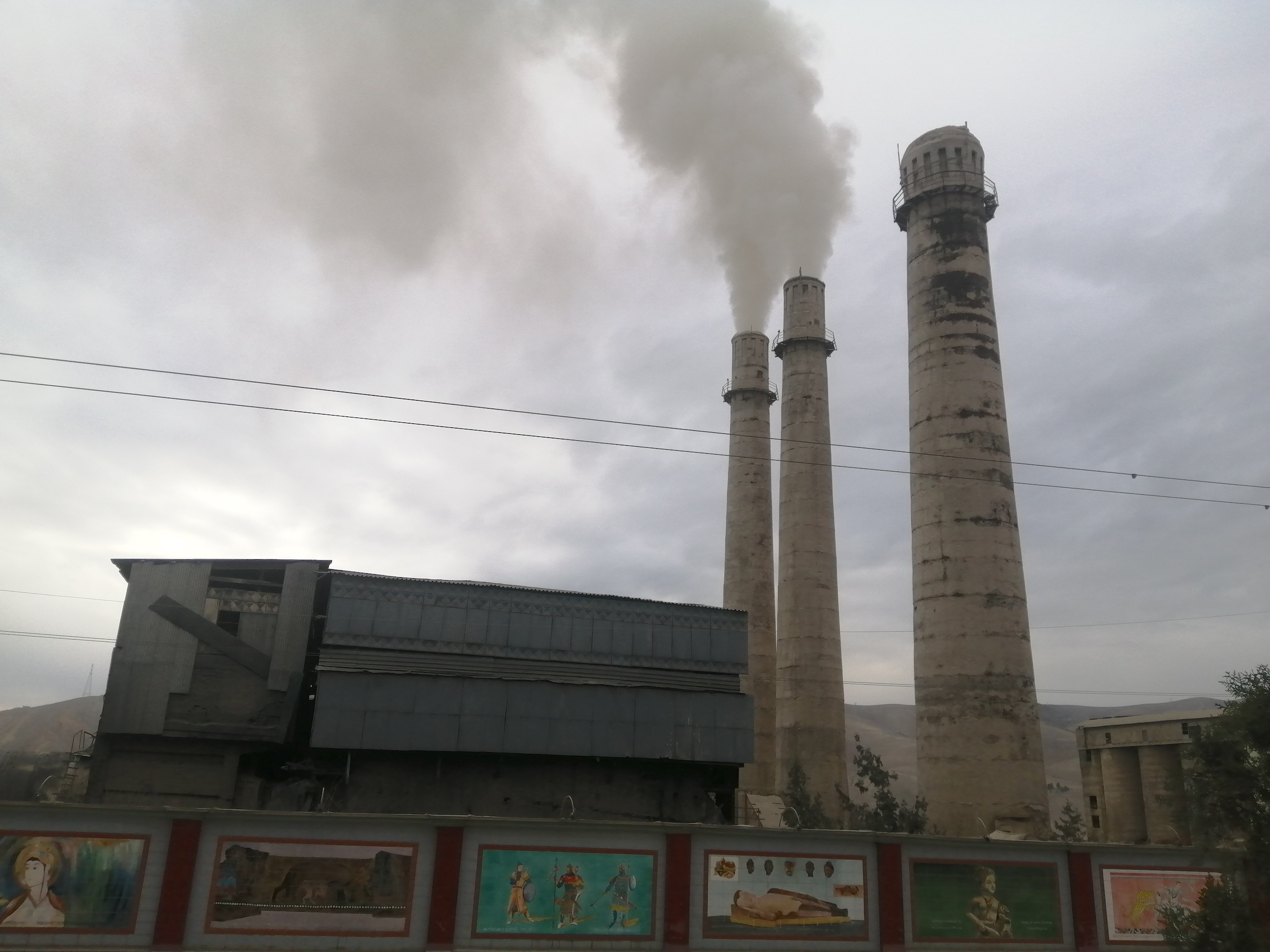
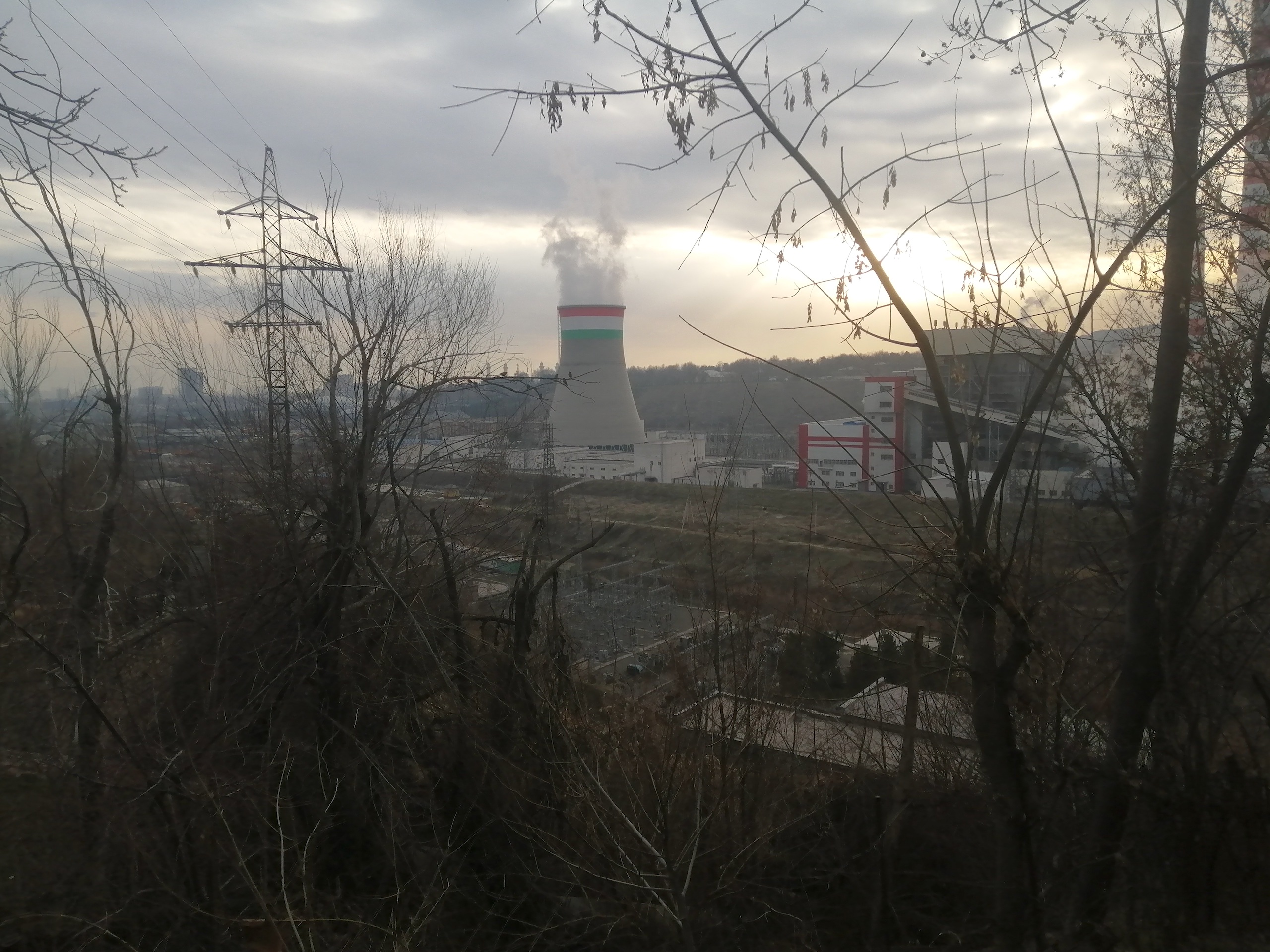
The role of Chinese investment
The Tajik government states that 207 “coal mining enterprises” and 101 “enterprises for the production of building materials” have been established over the past 10 years. Chinese investment appears to be essential in driving this industrial boom. For example, between 2013 and 2015 Chinese-funded cement plants increased Tajik production of the material fivefold. But how much is investment from China currently driving Tajikistan’s development choices?
Irna Hofman, research associate at the University of Oxford, said it is difficult to provide exact details on the contribution of Chinese companies, loans and capital to the development of specific sectors in Tajikistan. But is known that “Chinese investment is concentrated in infrastructure and industry (mining, and cement and brick factories),” she said. The picture is similar in Kyrgyzstan.
To achieve its goal of becoming less import-dependent, the country needs investment, Hofman explained. As the Tajik state experiences difficulties attracting domestic private capital and foreign investment, Chinese investors have become one of the only sources of funding for revitalising the country’s industries – both heavy and light. Improving relations with Uzbekistan in recent years has also brought investment from Uzbek companies.
China asserts that its Belt and Road Initiative global development strategy responds to demand driven by host countries’ policy and economic needs. “We see, across Central Asia, that Chinese investment increasingly targets fields and industries which are prioritised by the host country,” said Hofman.
Polluting industries move to areas where environmental regulations are less stringent, or to areas that are regarded by policymakers as less importantIrna Hofman, University of Oxford
While much does depend on Tajik decision-makers, “the country is not in a geopolitical position where it could choose its development course,” argued Natalia Idrisova, an environmental activist in Tajikistan.
Hofman stressed that “China” is not monolithic and there are a host of businesses alongside state-owned enterprises looking for overseas opportunities. Some Chinese enterprises go overseas because they have been pushed out of the domestic market as a result of local competition or due to more stringent environmental regulations in recent years, Hofman said, giving the example of the steel industry. “In such a case, pollution moves from one area to another. This happens in domestic economies, and in other countries around the world too, where polluting industries move to areas where environmental regulations are less stringent, or to areas that are regarded by policymakers as less important.”
Climate pledges at odds with development strategy
Tajikistan, the poorest country in Central Asia in terms of GDP per capita, has committed to reduce its emissions of greenhouse gases by 30-40% by 2030, compared with 1990 levels. Switching to renewable energy sources would bring about a reduction in air pollution.
“The country has great potential in terms of solar and water resources,” pointed out Idrisova.
However, the government’s actions to date reveal little about how the country will achieve its ambitions. The development scenarios in its National Development Strategy include a heavy emphasis on industry. Cement production will rise, and by 2030 Tajikistan plans to produce 10 million more tons of coal than it did in 2016.
“My impression is that at this moment, [reducing emissions] is not a priority for the Tajik government,” said Hofman. She anticipates that the importance of coal will not diminish in the short term, although some people have high expectations of the Rogun dam, which is currently under construction. Even then, there remains the problem that hydroelectricity is seasonal: water levels in reservoirs drop during the winter, when demand for power is highest.
Will Dushanbe’s air quality improve?
Air pollution in Dushanbe does not just come from burning coal. Emissions from vehicles have doubled in the past decade, and are now 340,000-540,000 tons of CO2 equivalent per year.
According to Idrisova, in 2018 Tajikistan’s Committee for Environmental Protection stated that cars and trucks are responsible for more than 70% of harmful emissions. In the same year, the authorities banned the import of old cars into the country. The government also brought in pollution inspections of vehicles. However, a review of the initiative by the UN Economic Commission for Europe cast doubt on how much it improves air quality.
In January this year, the first electric cars were introduced in Dushanbe. However, Hofman pointed out, “with electricity generated by fossil fuels, one may question its impact”.
Timur Idrisov, senior adviser to Little Earth, an NGO based in Dushanbe, said a range of measures can be taken. He advocated relocating polluting enterprises outside the city, replacing old technology and enforcing the “polluter pays” principle, while developing conditions for cleaner businesses.
* Some names have been changed
The Third Pole asked Tajikistan’s Committee for Environmental Conservation and Ministry of Energy and Water Resources about the issues raised in this article. A response had not been received at the time of publication.
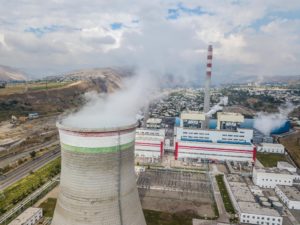
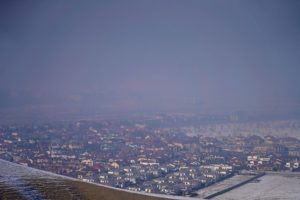
![Woman carrying water from Karakul Lake in Tajikistan [Image by: Alamy]](https://dialogue.earth/content/uploads/2020/09/Tajikistan-water-shortage-story-featured-image-alamy-woman-carrying-water-from-Karakul-Lake-300x201.jpg)

